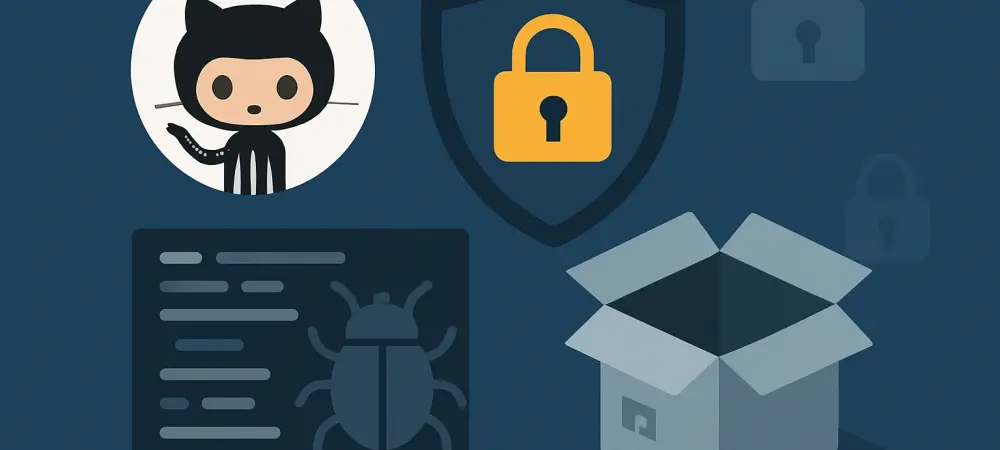In an era where software supply-chain attacks have become a pervasive threat to developers and organizations alike, the open-source community faces mounting challenges in safeguarding critical codebases. GitHub, a cornerstone platform for software development and collaboration, has taken center stage in addressing these risks within its npm ecosystem, a vital repository for millions of developers worldwide. With high-profile breaches exposing vulnerabilities in package distribution, the urgency to fortify security has never been greater. npm, as the Node Package Manager, serves as a backbone for countless projects, making it a prime target for malicious actors seeking to exploit weaknesses in the supply chain. GitHub’s response to these threats involves a comprehensive overhaul of authentication and publishing protocols, aiming to protect users from sophisticated attacks that could compromise sensitive data or disrupt global software operations. This initiative underscores a broader industry push toward resilience in open-source environments, setting a precedent for proactive cybersecurity measures.
Reinforcing Authentication and Access Controls
GitHub’s latest security enhancements for npm focus heavily on strengthening authentication mechanisms to prevent unauthorized access and mitigate risks. A key component of this strategy is the mandatory implementation of two-factor authentication (2FA) for local publishing, ensuring that developers must verify their identity through an additional layer of security before releasing packages. This move eliminates loopholes that previously allowed bypassing such protections, a vulnerability often exploited in past breaches. Additionally, the platform is transitioning away from less secure time-based one-time password (TOTP) 2FA methods, favoring FIDO-based alternatives that offer stronger safeguards against phishing and credential theft. By enforcing these stricter controls, GitHub aims to create a robust barrier against attackers attempting to infiltrate developer accounts. This shift, while potentially requiring adaptation from users accustomed to older systems, reflects a necessary evolution in response to the sophisticated tactics employed by cybercriminals targeting open-source repositories.
Beyond authentication, GitHub is revamping its token management system to further secure npm package publishing. The deprecation of outdated legacy tokens marks a significant step, as these older credentials often lacked the granularity needed for precise access control. In their place, the platform is introducing short-lived, granular tokens with a default expiration period of just seven days, drastically reducing the window of opportunity for misuse if a token is compromised. Moreover, publishing permissions tied to tokens are being tightly restricted, with token-based publishing set to be disabled by default in favor of more secure alternatives. This approach minimizes the risk of long-term exposure and ensures that even in the event of a breach, the potential damage is contained. GitHub’s commitment to these stringent access policies demonstrates a prioritization of ecosystem integrity over user convenience, acknowledging that temporary disruptions are a small price to pay for long-term protection against supply-chain threats.
Combating Supply-Chain Threats with Trusted Publishing
One of GitHub’s flagship initiatives to counter supply-chain attacks on npm is the expansion of Trusted Publishing, a method designed to streamline secure package distribution. Unlike traditional token-based systems, Trusted Publishing integrates directly with GitHub’s infrastructure, allowing developers to publish packages without relying on static credentials that could be stolen or misused. This system ties package releases to specific repositories and workflows, ensuring that only authorized actions from trusted sources can proceed. The significance of this approach lies in its ability to thwart attackers who might gain access to a maintainer’s account, as seen in incidents like the Shai-Hulud worm attack, where malware self-replicated through compromised credentials. By reducing reliance on vulnerable authentication methods, GitHub is building a safer pipeline for open-source contributions, addressing a critical weak point in the software supply chain that impacts organizations of all sizes.
In tandem with Trusted Publishing, GitHub has taken decisive action to neutralize immediate threats within the npm ecosystem. Following recent attacks, the platform swiftly removed over 500 compromised packages and implemented blocks on uploads exhibiting suspicious behavior, showcasing a proactive stance against malware proliferation. These rapid interventions highlight the scale of the challenge, as supply-chain attacks often exploit widely used packages to infiltrate downstream systems, affecting countless developers and enterprises. GitHub’s efforts to monitor and respond to such incidents are complemented by a commitment to user education, providing detailed documentation and migration guides to ease the transition to new security protocols. This balance of enforcement and support aims to maintain trust within the developer community, ensuring that protective measures do not alienate users but instead empower them to adopt safer practices in an increasingly hostile digital landscape.
Building a Resilient Future for Open-Source Security
Reflecting on GitHub’s comprehensive security overhaul for npm, it’s clear that the platform has taken bold steps to address vulnerabilities exposed by incidents like the Shai-Hulud worm attack. By mandating robust 2FA, phasing out legacy tokens, and championing Trusted Publishing, GitHub has tackled the root causes of supply-chain compromises head-on. These actions, though disruptive to some workflows, are crucial in reinforcing the integrity of a repository central to modern software development. The removal of compromised packages and the introduction of stringent access controls further underscore a dedication to immediate threat mitigation. Looking ahead, developers and organizations should prioritize familiarizing themselves with these updated protocols, leveraging GitHub’s resources to adapt seamlessly. Staying vigilant about emerging risks and embracing secure publishing practices will be essential for sustaining a resilient open-source ecosystem. GitHub’s blueprint offers a model for balancing security with usability, paving the way for broader industry advancements in combating cyber threats.

